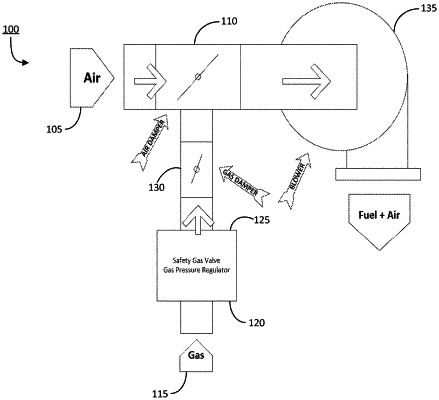| CPC F24H 9/2035 (2013.01) [F23N 5/006 (2013.01); F24H 1/0027 (2013.01); F24H 15/36 (2022.01); F24H 15/414 (2022.01); F23N 2241/04 (2020.01)] | 10 Claims |

|
1. A fluid heating system comprising:
a burner unit configured to heat a fluid, the burner unit including at least one adjustable device;
a sensor configured to sense a characteristic of the fluid heating system; and
a controller coupled to the burner unit and the sensor, the controller including a processor and memory, the controller configured to control combustion of the burner unit based on a first and a second feedback loop control,
wherein the first feedback loop control comprises:
receiving a first signal corresponding to the characteristic from the sensor;
determining, based on the first signal, a deviation of the characteristic from a target value of the characteristic;
changing a first trim value based on said deviation; and
applying the first trim value in a control signal to the at least one adjustable device in order to drive the characteristic closer to the target value of the characteristic, and
wherein the second feedback loop control comprises:
determining a deviation of the first trim value from a target first trim value;
retrieving one or more trim points from a trim table;
adjusting the one or more trim points based on said deviation;
calculating a second trim value based on the adjusted one or more trim points; and
applying the second trim value in a control signal to the at least one adjustable device in order to drive the first trim value closer to the target first trim value.
|